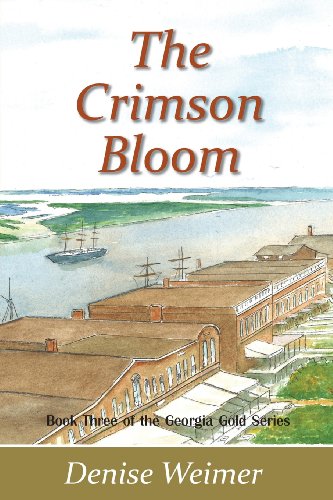The Crimson Bloom
The Crimson Bloom is the third in the Georgia Gold series. It primarily follows the fortunes of two women, Mahala Franklin and Carolyn Rousseau, during the Civil War years in Georgia. Both women are loved by two men: In Carolyn’s case she has married one of them, Devereaux, and his brother Dylan must make peace with her choice and also square his conscience as a pastor with the urge he feels to fight for the South alongside Dev. Mahala is torn between blockade runner Jack Randall, whose family may have difficulty accepting her Cherokee heritage, and Clay Fraser, of mixed blood like her, who joins up with a native regiment.
This family saga will please fans of Eugenia Price’s Georgia-based novels. In some respects it picks up where Price’s Savannah Quartet leaves off, detailing the hardships endured by both fighting men and those left at home as the South fights for its doomed cause. Threads from previous Georgia Gold novels run through this installment, including divergent attitudes toward slavery, the mystery of Mahala’s father’s death, and the disappearance of his fortune in gold.
Considering so much is going on, the tone of The Crimson Bloom is remarkably understated, a gentle and undemanding read with a sense of inevitability to the destinies in store for the characters. Some of the clichés of the South’s Civil War story are there in the quiet dignity of the women, the terror inspired by the advancing Union troops and the loyalty of many of the freed slaves (although there is, I’m glad to report, one mass desertion). Weimer handles the multiple points of view well and keeps the reader engaged, although I wished there hadn’t been a cliffhanger ending.










